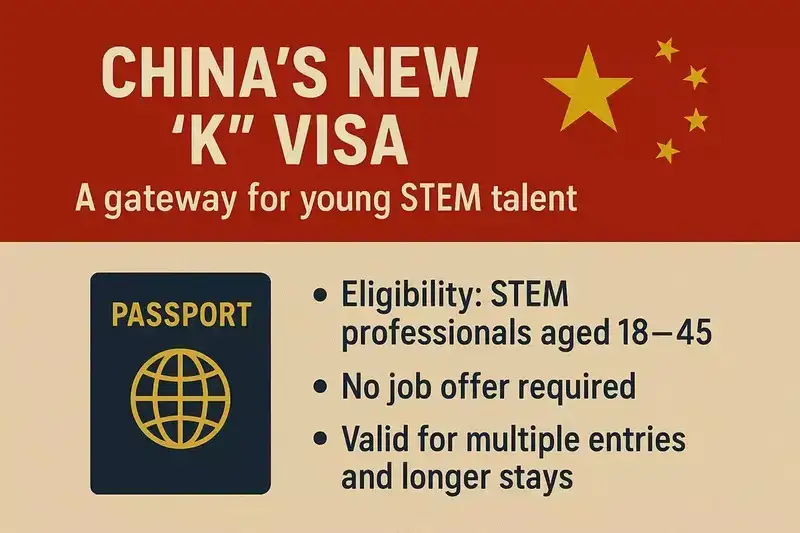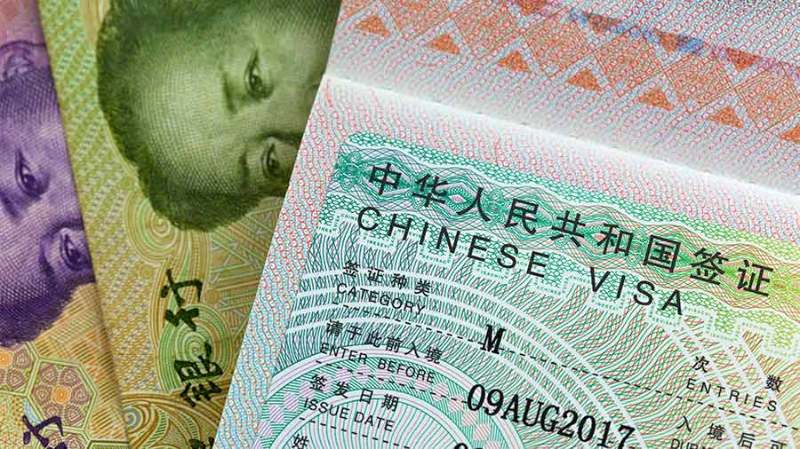China’s introduction of the K visa marks a pivotal moment in the country's pursuit of global technology leadership, positioning itself as a compelling destination for the world’s young science and technology professionals. This policy shift comes as other major economies, most notably the United States, impose stricter immigration rules, such as increased fees and limited quotas for the US H-1B skilled worker visa.
Essence of the K Visa
The K visa allows foreign nationals in science, technology, engineering, and mathematics (STEM) fields to live and work in China without requiring a job offer or domestic sponsor, a major departure from conventional visa rules. Applicants need at least a bachelor’s degree and must be classified as “young professionals,” though the specific age limits are still to be detailed. The visa enables holders to participate in education, research, entrepreneurship, and business activities, with increased flexibility for travel and residence within China.

Making China More Attractive
China’s K visa undermines traditional barriers, providing a more streamlined path for top global talent. By focusing on early-career professionals, China is not only filling immediate gaps in its talent market but also aiming to build long-term international partnerships and networks that can foster decades of collaboration. This sends a clear message that China is open for global science and technology talent, at a time when the US and some other nations are perceived as less welcoming.
Global and Domestic Effects
- Enhanced Innovation Ecosystems: The policy can benefit regional innovation hubs and smaller tech clusters across China that previously struggled to attract expertise due to complex visa requirements.
- Boost for Local and Returned Talent: It may also encourage foreign-educated Chinese nationals or those with dual citizenship to return, reducing the “brain drain” that has historically seen China’s top talent emigrate.
- Strengthening China’s Geopolitical Edge: Amidst tightened US immigration, the K visa could reposition China as a magnet for global tech talent, enhancing its competitive edge in the international arena.
- Potential for "Reverse Brain Drain": For Chinese nationals studying or working abroad, the K visa offers a simpler path to return for short- or long-term professional engagement.
- Soft Power and Perception: China projects a new image of openness, potentially increasing its “soft power” and attracting young minds disillusioned by barriers elsewhere.
Challenges and Outlook
Despite its advantages, several aspects of the K visa program remain unclear:
- Definition of "Young Talent": Age and field requirements will need clarification to avoid exclusion of talented mid-career experts or those with non-traditional backgrounds.
- Integration and Retention: The real challenge isn’t only entry, but helping K visa holders integrate socially and professionally and building an environment that encourages them to stay.
- Execution: Even with streamlined entry, visa processing efficiency, housing, and workplace support will be crucial to attract and keep top talent.
Impact on World Talent Flow
The launch has already had noticeable effects: The number of international trips to and from China surged by over 30% in early 2025, evidence of growing interest in China as academic, entrepreneurial, and professional opportunities broaden. With the K visa, skilled professionals now have a new and sometimes more attractive option, reshaping global talent flows and potentially denting the traditional dominance the US and other Western nations held with tech-driven immigration programs.
In summary, China’s K visa could transform both its national innovation landscape and the global competition for STEM talent, representing one of the boldest moves yet in the international race for technology leadership.



Discussion
Start the conversation
No comments yet
Be the first to share your thoughts on this article. Your insights could spark an interesting discussion!